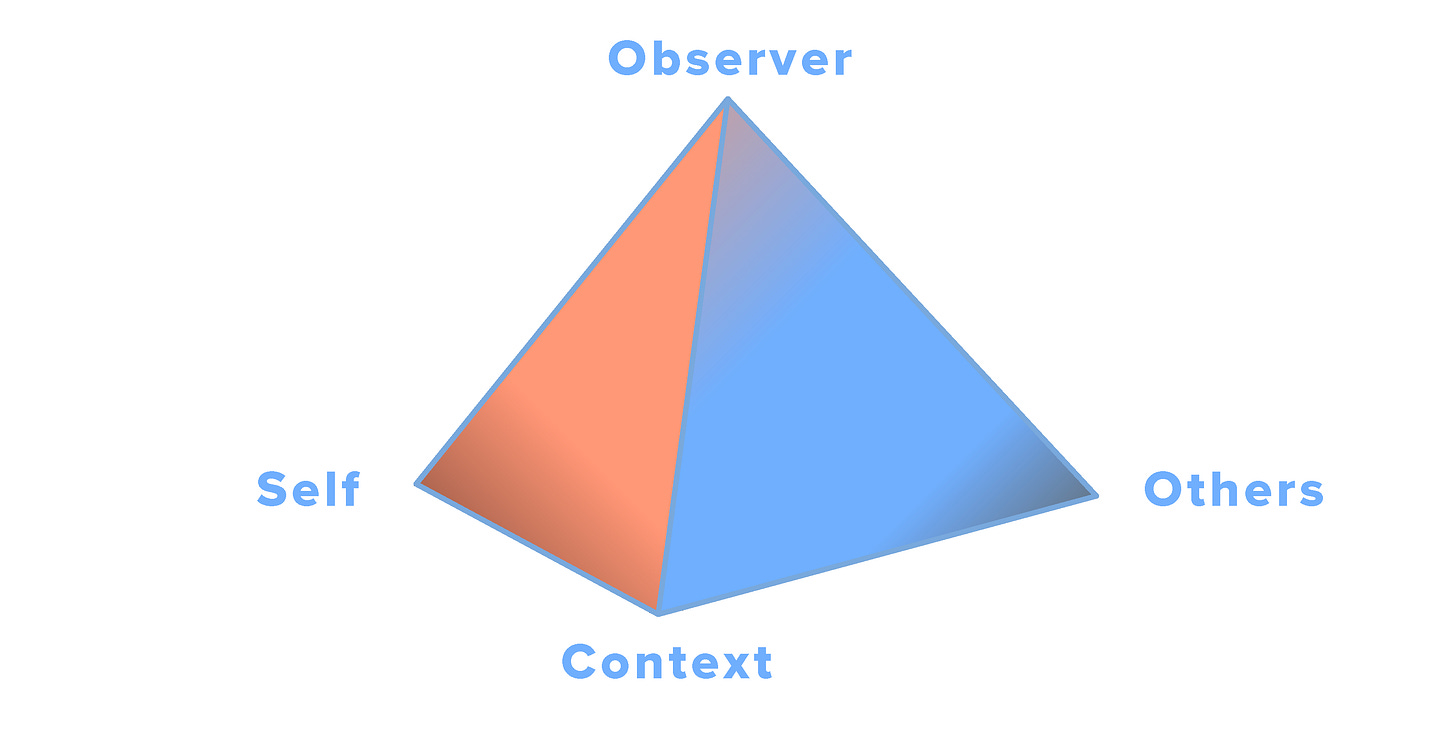Cutting through the noise in your head
With one tool and one simple model
A significant challenge to impactful leadership is not only the noise around you, but the ‘noise in your head’ – your own biases, assumptions, fears, and doubts - which may distract you from the reality on the ground, disrupt sound decision-making, and undermine your positive impact.
The antidote to this is simple (ridiculously simple) but hard to do - at least at first.
You need to learn how to pause. If you don’t, you won’t be able to choose your best response.
A powerful way of consciously pausing is a simple three-step mechanism I call ‘The Pause Tool’. It gives you just enough space to connect with the more grounded version of you.
Give this a try now:
Step one: pause. Press an imaginary pause button somewhere in your body. If you can, aim for the area around the base of your sternum known as the solar plexus.
Step two: focus. As best you can, bring your attention to that area. If circumstances allow, place your hand there to support a sense of connection.
Step three: breathe. Breathe consciously in and out. Notice your breath moving in and out of your body. Observe your breath slowing and deepening.
To grow your own inner ‘pause muscle’, do this at least once a day for the next few weeks. Even better, make it a habit for life. It doesn’t have to be another thing to find time for either. Choose something you do every day - like making a hot drink - and practise pausing while you wait.
As you do, notice how you’re feeling, and pay attention to the sensations in your body – tightness in your chest, stomach, throat; a clenching of your jaw, shoulders, hands. As you breathe consciously in and out, see if you can allow the tension to soften a little.
Pausing is an essential leadership skill. When you pause, you give yourself just enough space to think before you react.
Pausing is also the gateway to the first foundation of Mindful Command: Balanced Awareness. You pause, step back, and look at the whole picture through three key touch points: yourself; others; and the context.
Self. You tune into your thoughts and feelings, and notice the story you’re telling yourself.
Others. You listen without prejudice to what others are saying.
Context. You examine what’s at stake, what’s the best realistic outcome, and what’s needed to achieve it.
Seeing things as they are requires a cool head. You must be able to tune into the complexities, sensibilities and nuances of the situation without allowing them to skew your perspective. The higher the stakes, the greater the risks, and the tougher the decisions required.
Pausing and taking a balanced view helps you cut through the noise and take things in your stride. You engender a quality of neutral openness that generates better conversations and greater impact.
Have a play with this yourself?
Do let me know what you make of it.
With love from the mountain,
Sally-Anne



